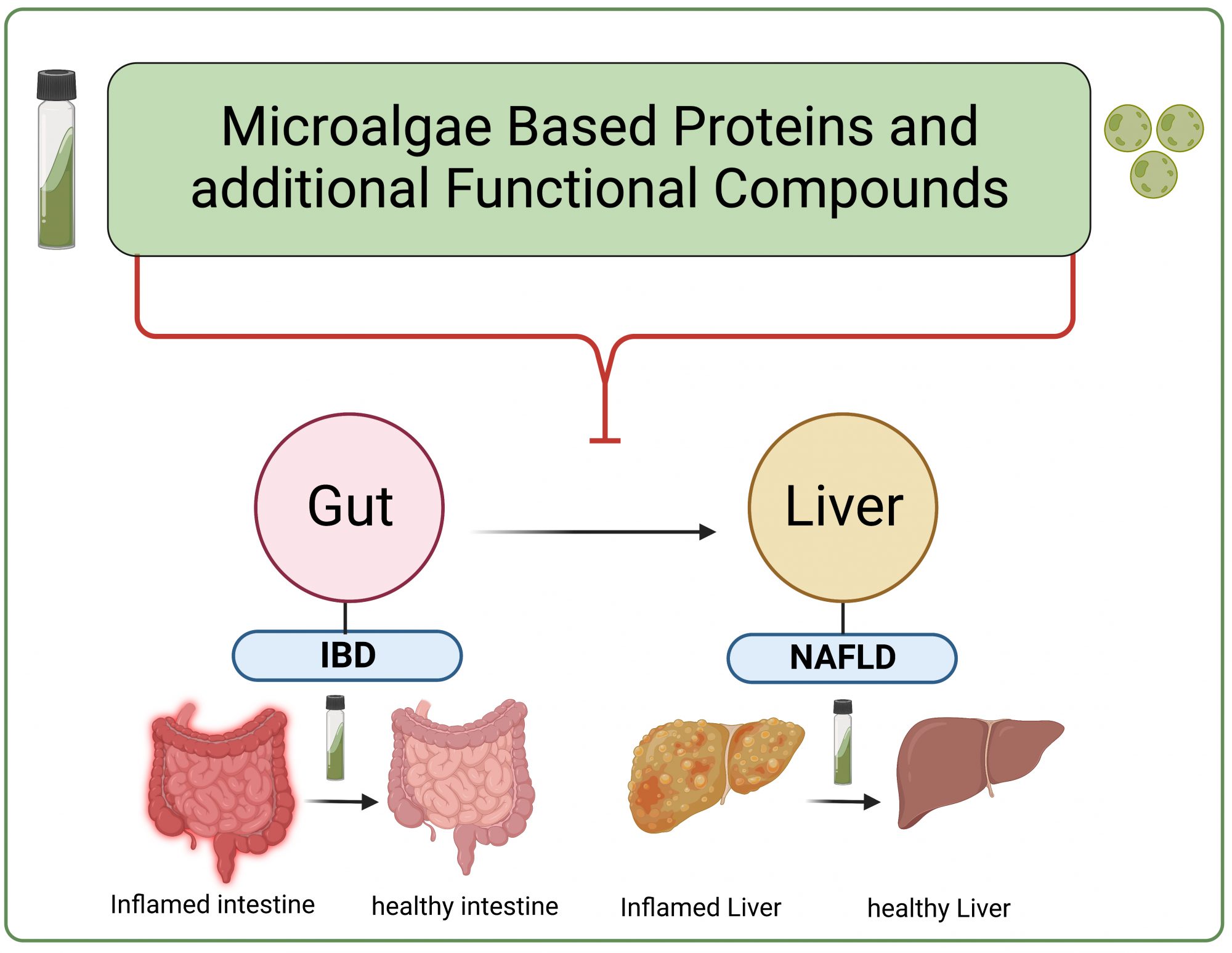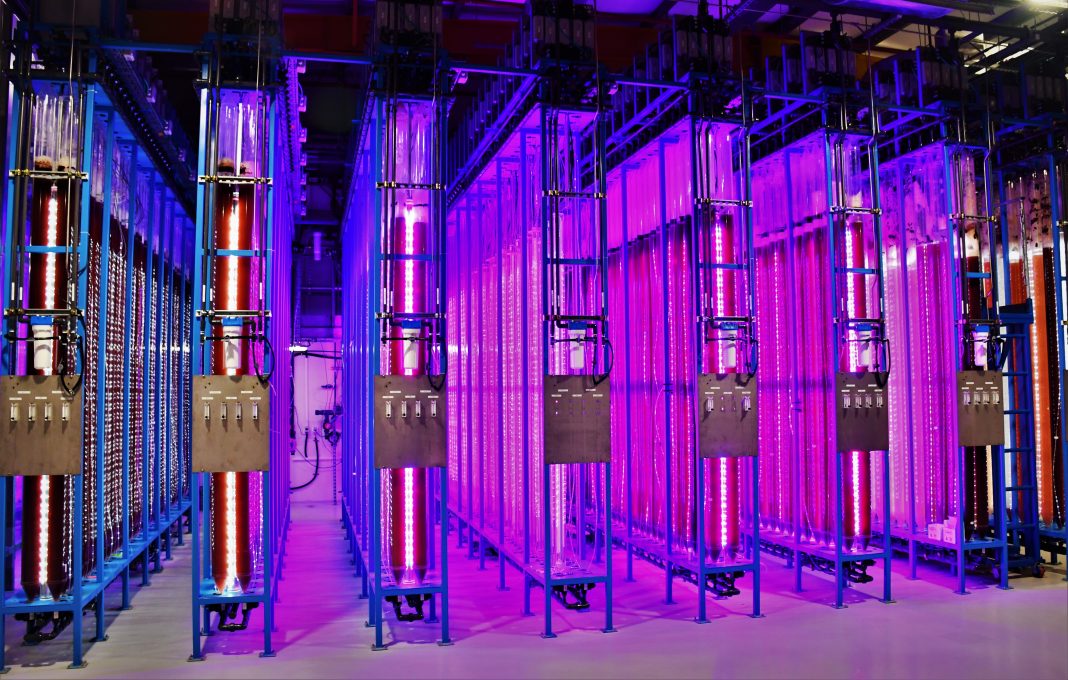Microalgae can be an alternative sustainable source of protein and functional food ingredients that have the potential to improve gut and liver health
Protein is a key component of a healthy diet and is found in a variety of foods, including those obtained from animal sources. Although animal-derived proteins are rich in essential amino acids, they are also associated with an increased risk of chronic diseases, such as heart disease, non-alcoholic fatty liver disease (NAFLD) and inflammatory bowel disease (IBD).
Increased demand for animal-derived proteins is also a major contributor to climate change, with animal agriculture being a significant greenhouse gas emitter and a major driver of deforestation and biodiversity loss.
Due to population growth, demand for meat is expected to increase substantially in the coming decades. The meat industry already consumes more food than it produces and currently, more than 75% of agricultural crops are used for animal feed.
This increased demand for dietary protein combined with the need to ensure food security worldwide, has led to a growing interest in alternative protein sources, both to improve human health and to address environmental concerns.
In a recent review article published in the journal Global Challenges, researchers from the MIGAL- Galilee Research Institute in Israel described the use of microalgae as a sustainable source of protein and as functional foods to promote gut and liver health.

Can microalgae be used to improve gut and liver health?
Chronic diseases, such as IBD and NAFLD, have become increasingly common in the last few decades, with Western, high-fat, high-carbohydrate diets now recognised as being a significant contributing factor.
IBD affects millions of people worldwide and the number of patients is increasing in both Western and newly industrialised countries. It is associated with distressing symptoms and there is currently no cure. Treatments are available to dampen the inflammatory process, but not all patients respond well to them.
NAFLD, which is characterised by the accumulation of fat in the liver, is the most common chronic liver disease worldwide and is estimated to affect approximately 25% of the global population. Due to its close association with the Western diet, it often occurs in patients who are affected by other metabolic diseases such as type 2 diabetes, obesity, high blood pressure, and elevated levels of cholesterol or triglycerides in the blood. Symptoms are variable but it can progress to more severe liver conditions such as non- alcoholic steatohepatitis (NASH), hepatocellular carcinoma and end-stage liver disease.
Recently, data have begun to emerge showing that anti-inflammatory and antioxidant compounds derived from microalgae may be beneficial in patients with chronic inflammatory diseases such as IBD and NAFLD.
To date, promising results have been obtained from cell-based and animal studies, with these compounds exerting positive effects on fat metabolism, insulin sensitivity, and inflammatory processes. Clinical trials are now required to fully examine the efficacy and safety of these products in humans.
What are microalgae?
Microalgae are single-celled, microscopic organisms that grow in aquatic conditions. Although there are an estimated 200,000 species of microalgae, only a few have been extensively investigated so far.
Some types of microalgae, such as Spirulina and Chlorella, have been consumed since ancient times and are classified as Generally Recognised as Safe (GRAS) by the US Food and Drug Administration (FDA). In addition, several products derived from microalgae are also classified as GRAS by the FDA and have been approved as novel food ingredients by the European Union.
Certain species of microalgae have a protein content that is significantly higher than that provided by traditional plant sources and may be comparable to animal sources. They are also a good source of essential amino acids that cannot be synthesised by the human body.
A wide range of bioactive compounds, such as carotenoids, vitamins, pigments, phenolic compounds and fatty acids can also be obtained from microalgae. These are of great interest to the scientific community due to their anti-inflammatory and antioxidant properties and potential health benefits.
Microalgae can also potentially be used as a sustainable source of feed for livestock. This could improve animal health and meat quality as well as reducing the land area required for growing animal feed crops.

How can we grow and use microalgae?
Microalgae can grow in a variety of aquatic environments and have a very low impact on the environment. Growing up to ten times faster than traditional land-based crops, they can produce up to 7.5 tons of protein per hectare per year, without the need for large areas of land or for fertilisers that pollute the water supply.
They also capture carbon dioxide more efficiently than land-based plants, which means that they can be grown on an industrial scale with low greenhouse gas emissions.
Although microalgae are relatively easy to grow, there remain challenges associated with their large-scale cultivation and the extraction of proteins or food supplements. Commercial microalgae cultivation needs expensive photobioreactors to provide enough light for the cultures. This can be overcome by adding an organic food source to the growth medium to allow improved growth to take place.
Multiple steps are also required to extract and purify proteins and bioactive compounds from microalgae and the processes require optimisation for microalgal proteins and bioactive compounds to be produced on a commercial scale.
Despite these challenges, cultivation methods for microalgae are already improving, as does the understanding of how production of a target compound can be triggered by changing cultivation conditions. For instance, microalgae produce more anti-inflammatory compounds when facing nutrient starvation, extreme temperature and intense light.
Reference
Eilam Y, Khattib H, Pintel N, Avni D. Microalgae – Sustainable Source for Alternative Proteins and Functional Ingredients Promoting Gut and Liver Health. Global Challenges 2023; 2200177.

This work is licensed under Creative Commons Attribution-NonCommercial-NoDerivatives 4.0 International.


